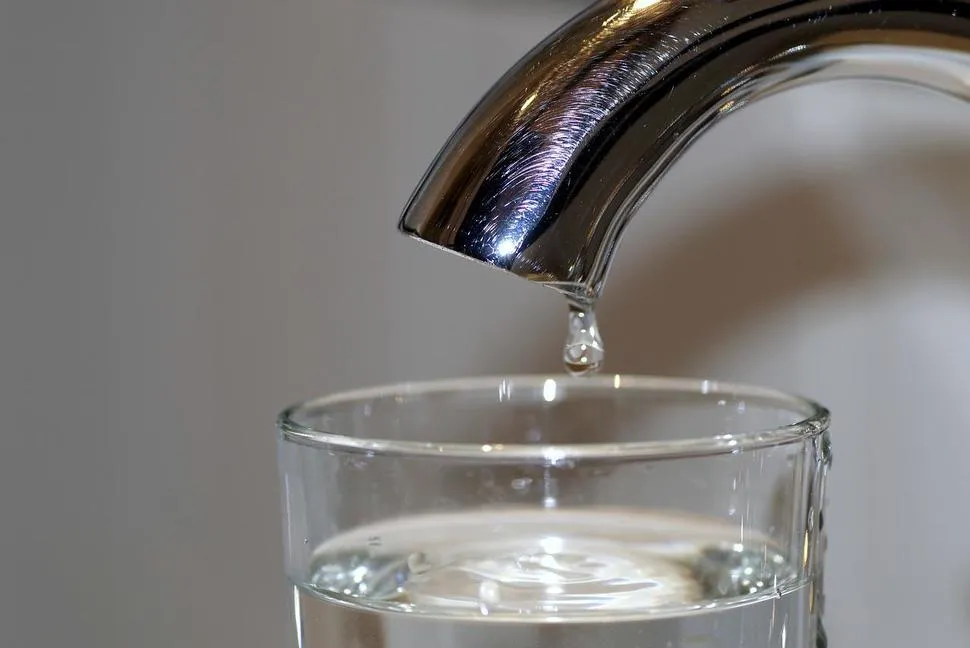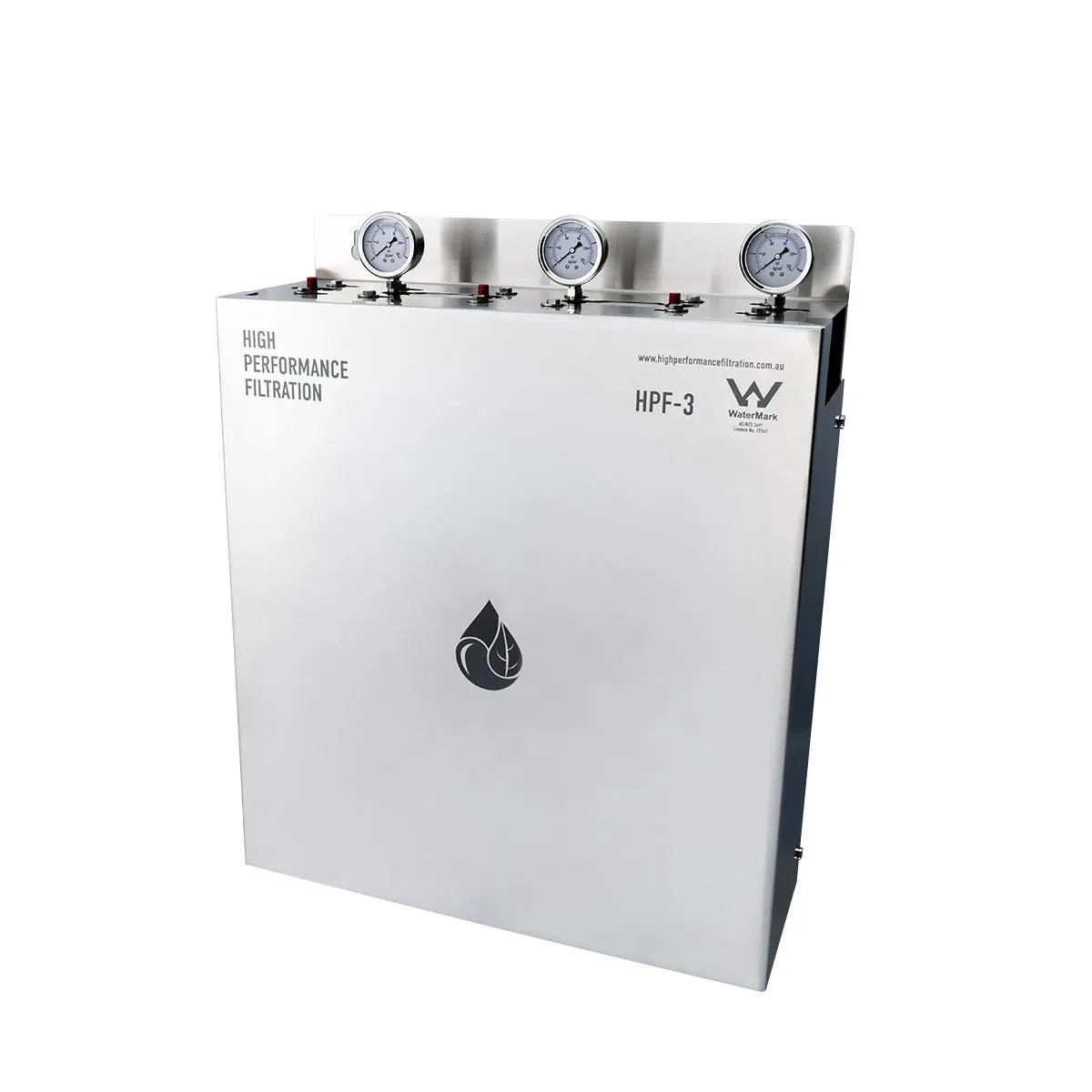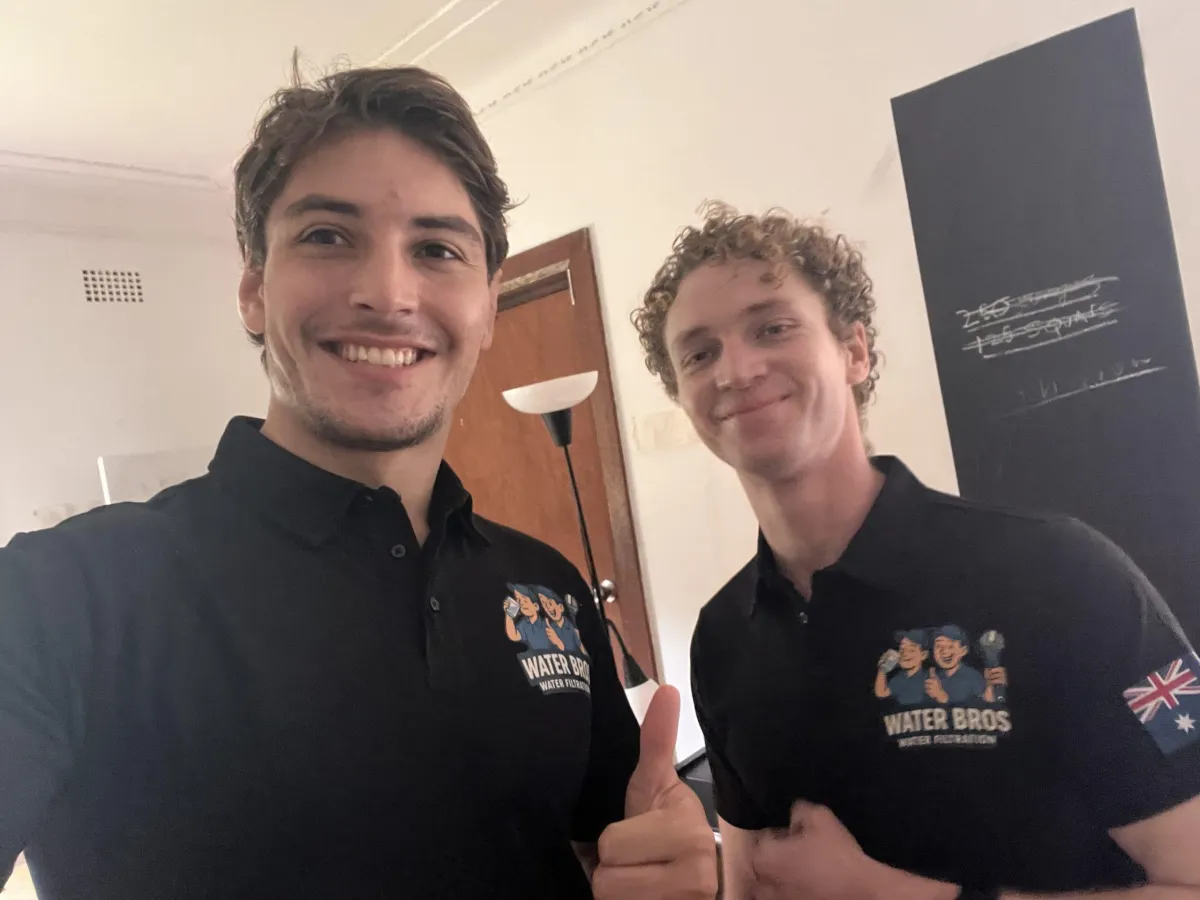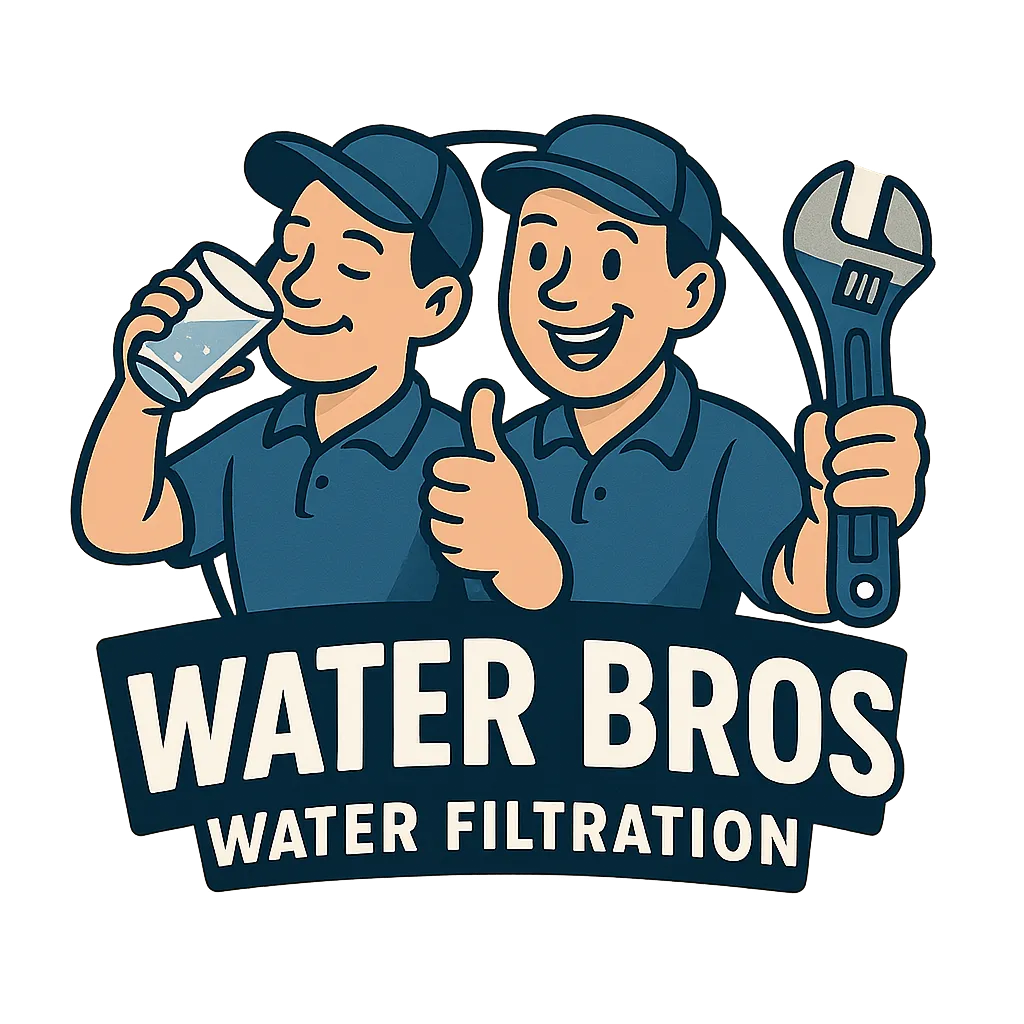
Sutherland Shire, Do You Know What’s Really in Your Tap Water?
Turning on the tap for a glass of water should be the healthiest choice you make all day.
After all, our Sydney water is treated and “safe”, right?
Unfortunately, “safe” doesn’t mean pure or healthy.
In fact, the water coming out of your kitchen tap in the Sutherland Shire likely contains a cocktail of chemicals and contaminants that would horrify any health-conscious family – and the craziest part? Some of those chemicals are deliberately put there by our own government.
We’re not trying to scare you senseless. But if you value your family’s health (and sanity), you deserve to know what’s really lurking in your drinking water. Let’s expose the major contaminants found in municipal tap water – fluoride, chlorine, PFAS, microplastics, heavy metals – and why it’s absurd that we’ve been told this is okay.
We’ll also talk solutions (yes, there’s hope!), including how a proper home filtration system or even a basic filter can help protect you. Water Bros (that’s us, two local mates from right here in the Shire) is here to help you navigate the truth – not just to sell you something (although full disclosure, we will try to :)) .
A QUICK NOTE: Some of the claims about the health effects of tap water may be seen as "fear mongering" to sell a product. We do in fact sell water filtration, but the primary goal of this article is to educate and warn people about the very real effects of chemicals in our water.
Even if you do not decide to go ahead with our services, we highly recommend and desire for you to buy some sort of filtration device for your home, even it is only a basic jug filter.
Protect yourself - and your families.
Information about the effects of these chemicals is freely available online, and everything we write is backed up by sources.
The Hidden Chemicals in Your Tap Water
Fluoride
It’s hard to believe, but yes – authorities intentionally add fluoride compounds to our tap water. The practice began in the 1960s as a way to prevent tooth decay, and today about 96% of NSW residents (including the Shire) receive fluoridated water.
We’re told it’s a public health miracle. But let’s look at the other side of the coin.
97% of Europe has banned it — while Australia and the U.S. press on.
A Harvard meta-analysis of 27 studies found children in high-fluoride areas had IQs up to 7 points lower than kids in low-fluoride areas.
The lead scientist ranked fluoride with lead and mercury as a known neurotoxin.
Other studies link it to thyroid, bone, and cancer risks.
Bottom line:
Fluoride might help prevent cavities, but it’s also a neurotoxin in high doses and an industrial chemical at heart. Even if you appreciate the dental intent, you have to ask – is there a better way to protect teeth than swallowing a toxin?
For many Shire residents, the answer is a firm yes.
Chlorine
Chlorine is the reason your eyes may hurt after the shower, why your hair might be more brittle than it should be, it causes asthma in children and adults and
It's also a source of asthma in children.
Chlorine is added to nearly all Australian tap water to kill bacteria and viruses — a move that’s saved lives.
However, once chlorine has done its job at the treatment plant, it comes out of your tap still in the water.
And there's no reason it should be.
Epidemiological studies have linked Chlorine exposure to bladder and colorectal cancers, and even hormonal disruption.
That pool-smell you sometimes notice from your shower or sink? That’s free chlorine — and it’s being inhaled and absorbed through your skin.
Long-term exposure has been tied to respiratory irritation, dry skin, and aggravated asthma.
PFAS – “Forever Chemicals” That Stick in Your Blood
PFAS (per- and polyfluoroalkyl substances) are synthetic chemicals used in non-stick cookware, waterproof clothing, food packaging, and firefighting foam.
They’re everywhere — and they’re nicknamed “forever chemicals” because they don’t break down. Once PFAS enter your body, they accumulate in your organs and bloodstream, sometimes for decades.
Research has linked PFAS exposure to kidney and testicular cancers, thyroid dysfunction, hormone disruption, immune suppression, and developmental issues in children.
A 2024 study from the University of New South Wales revealed that Australia is now considered a global PFAS hotspot, with many sites testing above internationally accepted levels. The U.S. recently revised their safe limit for PFOA to 4 ng/L, while Australia still allows up to 560 ng/L — that’s 140 times higher.
Even worse? Until recently, Sydney Water didn’t regularly test for PFAS, claiming there was “no evidence it’s an issue.” But independent testing tells another story. These chemicals aren’t going anywhere — and our regulators are years behind.
Microplastics – Invisible, But Inside You
You can’t see them, but microplastics are in your drinking water. These tiny fragments — from synthetic clothes, bottles, packaging and degraded waste — are now found in tap water, bottled water, seafood, salt, and even rain. A University of Newcastle study estimated the average person consumes 5 grams of plastic every week — that’s the weight of a credit card.
These particles are small enough to enter human tissues, blood, and organs. Early studies suggest they carry toxic chemicals, cause inflammation, and interfere with hormone function. Shockingly, bottled water is often worse — a 2018 global study found 93% of bottled water brands contained microplastic particles, with some bottles containing thousands of pieces per litre.
Water treatment plants were never designed to filter these out. So unless you're actively removing them, you’re ingesting plastic every day — and passing it on to your kids, too.
Heavy Metals – Lead and the Pipes Bringing It to You
Heavy metals like lead, copper, arsenic, and mercury. While these aren’t added intentionally, they’re picked up in your home or building’s infrastructure — and they’re extremely toxic.
Think about the miles and miles of old and corroded pipe that water travels through before it reaches your home.
Lead is the biggest concern. It’s a neurotoxin with no safe exposure level. A NSW study found 56% of households tested had detectable lead, and 8% were above national safety limits.
Even in newer homes, brass fittings can legally contain small amounts of lead — and over time, they leach into your drinking water.
Long-term lead exposure is tied to lowered IQ, behavioural problems, kidney damage, and in adults, fertility issues and hypertension.
Arsenic and cadmium are carcinogens, while mercury affects nerves and brain function.
Because heavy metals bioaccumulate, even small daily doses can lead to serious health problems over time — especially for children. You won’t see them, taste them, or smell them — but they’re there.
Sources:
🧠 Fluoride Sources
Harvard HSPH (IQ Study)
https://www.hsph.harvard.edu/news/features/fluoride-childrens-health-grandjean-choi/
The Guardian (Europe rejects fluoride)
https://www.theguardian.com/society/2013/feb/09/fluoride-water-safety-debate
Origins OSU (Industrial source of fluoride)
https://origins.osu.edu/milestones/september-2014-fluoridated-water
💀 Chlorine Sources
IARC Monographs (Carcinogenic classification of DBPs)
https://monographs.iarc.who.int/
National Cancer Institute (THMs & Bladder Cancer)
https://dceg.cancer.gov/news-events/news/2020/thms-bladder-cancer
Environmental Health News (Disinfection byproduct risks)
https://www.ehn.org/disinfection-byproducts-2649015296.html
☣️ PFAS Sources
The Guardian (UNSW PFAS Study / Australia a global hotspot)
https://www.theguardian.com/australia-news/2024/jan/22/pfas-forever-chemicals-australia
Environmental Working Group (PFAS health impacts)
https://www.ewg.org/pfaschemicalswhatyouneedknow
NHMRC – Australian Drinking Water Guidelines for PFAS
https://www.nhmrc.gov.au/about-us/publications/australian-drinking-water-guidelines
🧷 Microplastics Sources
WWF/University of Newcastle (Plastic ingestion estimate)
Orb Media (Bottled water microplastics study)
https://orbmedia.org/stories/plus-plastic/
PubMed – Microplastics in human tissue
https://pubmed.ncbi.nlm.nih.gov/32311493/
⚠️ Heavy Metals Sources
PubMed (NSW lead & copper in household water)
https://pubmed.ncbi.nlm.nih.gov/30144843/
CDC (Health effects of lead)
https://www.cdc.gov/nceh/lead/prevention/health-effects.htm
WHO – Heavy metals in drinking water
https://www.who.int/water_sanitation_health/dwq/chemicals/en/
Are We Really Drinking This Stuff?
By now you might be thinking, “How on earth is this allowed?!” It’s a great question. Why are we drinking this stuff?
If all this has you feeling a bit overwhelmed or angry, that’s understandable. The good news is you can take back control over your home’s water quality. You don’t have to just accept this fate of “whatever the tap gives you.” In fact, an entire industry exists to empower people like us to get truly clean, healthy water from our taps – by filtering out the garbage that shouldn’t have been there in the first place.
Next, let’s talk solutions – real, practical, affordable solutions that can fit your lifestyle.
How to Protect Your Family’s Water (Taking Matters into Your Own Hands)
So, the water coming into your house has contaminants.
What can you do about it?
Boiling won’t solve it (that can actually concentrate some contaminants). Buying endless bottles of spring water isn’t the answer either (expensive, plastic-laden, and those bottles might have microplastics as we noted). The logical solution is point-of-use filtration – basically, filtering the water in your home, just before you drink it.
There are a range of options here, from simple pitcher jugs and faucet attachments to under-sink multi-stage systems and whole-house setups. The key is to choose a filtration method that targets the broadest range of contaminants possible. Not all filters are equal:
Basic carbon filters (e.g. Brita-style jugs or fridge filters)
These can improve taste by reducing chlorine, and they do capture some heavy metals (like lead) and some organic chemicals. However, they do not remove fluoride or PFAS reliably, and they might not catch the tiniest microplastics. They’re better than nothing – any filter is better than no filter – but they are a partial solution.
Dual-stage filters (carbon + another media)
Some countertop or under-sink filters have two stages, often a carbon block and maybe a special resin or sediment filter. These improve on basic carbon, handling more contaminants, but still often won’t remove fluoride or all PFAS.

A Whole Home Filtration Unit

Our 7-Step Undersink Reversis Osmosis Filter
Reverse Osmosis (RO) systems
This is the gold standard for home water purity. An RO system forces water through an ultra-fine semi-permeable membrane, usually alongside pre- and post-filters (like carbon) to trap virtually everything. **RO filters remove >90%–99% of most contaminants – yes, including fluoride, chlorine byproducts, PFAS, microplastics, and heavy metals. In a Duke University study, under-sink RO systems achieved “near-complete removal” of even stubborn PFAS chemicals, whereas many standard filters left significant amounts behind.
RO is also excellent for eliminating any weird tastes/odours, as it strips water down to its pure H2O core. Our RO filters also add a few kew minerals back, matching levels of water found in natural springs and rivers, making the water slightly alkaline.
Whole House Systems
These typically use activated carbon or sediment filters to treat all water as it enters your home. They’re great for removing chlorine (so you’re not bathing in it) and sediment/rust, and can protect your plumbing. However, most whole-house units don’t remove fluoride or PFAS unless you invest in an industrial-grade setup. Many people opt for a whole-house filter plus an RO unit under the kitchen sink for drinking/cooking water. It’s a bit of a belt-and-braces approach for maximum safety.
Our Honest Take
If you can swing it, get a quality under-sink reverse osmosis system for your drinking and cooking water. This will give you the greatest peace of mind. Modern RO systems are quite compact and can be installed under your kitchen sink (usually with a separate little faucet for the filtered water). Maintenance is generally replacing filters yearly.
Over years, that often comes out cheaper than buying bottled water, and far better for the planet too. We know not everyone has a spare few hundred bucks lying around. If a full system is not feasible right now, do something rather than nothing. Even a $50 countertop filter or a DIY filter from Bunnings is a start.
Grab a basic carbon filter on Amazon if that’s what your budget allows – it will at least reduce the chlorine, some microplastics, and a portion of heavy metals. It’s not a perfect fix, but it’s a good interim step. (In fact, we’ll even help you find an inexpensive option if you message us – that’s how serious we are about helping our community drink better water, whether or not we make a sale.)
However, keep in mind that most cheap filters do not remove fluoride or PFAS. If those worry you (and they should), plan for an upgrade when you can. Think of a jug filter as a bandaid; a proper multi-stage system is the cure.
Want to take action? Use our calculator to get a FREE estimate for our services. We won't even contact you if you don't want us to. We're doing this because we care about the health of our neighbours.
Meet The Water Bros
At this point, you might be wondering who we are to be giving all this advice. We’re Water Bros, a local Sutherland Shire small business run by two mates, Jesse and Harvey.
We met at a local sauna/ice-bath centre and from there, we discovered that we have a lot in common - especially when it comes to our health and controlling what goes into our bodies.

Testimonials:
"Amazing"
Jesse and Harvey are such handsome boys.
Now that I've had it done I can tell you that the difference is night and day.
My eyes no longer hurt after having a shower, my hair is softer and my skin is less dry. And it feels so good to be drinking water knowing it doesn't have all of these harmful chemicals in it!
- My Mum
Mum of two young kids
As a mum of two young kids, I was horrified to learn about the chemicals in our tap water.
I honestly felt betrayed that we weren’t told any of this. Installing a Water Bros filter was a game-changer. The water tastes so much better, my kids love it, and I have peace of mind knowing I’m not slowly poisoning them with ‘approved’ toxins. It’s the best investment I’ve made for our health.”
- Sarah M., Cronulla NSW
Smartest Health Decision
Honestly, this felt like one of the smartest health decisions we’ve made. I didn’t expect to notice such a big difference – but straight after installation, the water just felt
cleaner. That weird chemical taste? Gone. You won't even know what I'm talking about if you're just used to tap water!
Even the texture of the water changed – softer, smoother, like it actually belonged in your body.
The whole process was seamless. No pushy sales tactics, just clear info and real options. Jesse and Harvey are the real deal. We went with the payment plan, and it was a no-brainer.
If you care about your family’s health or you’ve ever questioned what’s in your tap water – get this done. I’m already telling everyone I know.
- Lachlan C., Cronulla NSW
FAQs
Do I really need a water filter in Australia? Isn’t our tap water safe?
Technically, yes — it meets legal standards. But “safe” doesn’t always mean “healthy.” Most water still contains fluoride, chlorine, microplastics, PFAS, and trace metals. It’s not enough to make you sick overnight, but small daily doses add up. Many developed countries have stricter standards or have banned things we still drink here. If you care about long-term health, filtering your water is a smart move.
Why is your system more expensive than something on Amazon?
Amazon filters might improve taste, but most don’t remove fluoride, PFAS, heavy metals, or microplastics. Our systems use multi-stage filtration and reverse osmosis, tested to remove up to 99% of contaminants. Plus, we install everything properly, offer ongoing support, and use premium components made for Australian conditions. This isn’t a bandaid — it’s a permanent upgrade to your health.
What if I rent or live in an apartment?
We get this a lot. If you rent, you probably can’t install a full house system — but you can still install an undersink reverse osmosis unit (no damage, easy to remove) and a shower filter. These protect your drinking, cooking, and bathing water. It’s not all-or-nothing — we’ll guide you to what works in your setup.

Is this just another wellness trend?
This isn’t “woo-woo.” It’s science. Go look up PFAS, fluoride neurotoxicity, or THMs in chlorinated water — it’s all backed by peer-reviewed studies. Clean water isn’t a trend — it’s a foundation for long-term health.
Will a water filter really make a noticeable difference?
100%. People report better-tasting water, improved digestion, clearer skin, and fewer flare-ups of eczema or asthma. Coffee and tea taste cleaner. Some families even report fewer sick days and better sleep. And beyond what you feel — you gain peace of mind knowing you’re not slowly ingesting toxins every day.
How often do I need to change the filters?
Most filters last 6 to 12 months depending on water quality and usage. Reverse osmosis membranes can last 2–3 years. We’ll show you how it works, and you’ll get reminders when it's time to swap. It’s low-maintenance — we’ve designed it to be set-and-forget.
Do you offer a warranty?
Yes — and it’s better than the big guys. We offer a lifetime warranty on workmanship, plus full manufacturer coverage on all filters and systems. And because we’re local, you’ll always speak to a real person, not a call centre.
What if I can’t afford the full system right now?
We’re not here to pressure anyone. If a full system isn’t in the budget, we’ll recommend the best affordable option, even if it’s a basic Amazon filter. You deserve clean water either way — and when you’re ready for a full system, we’ll still be here to help.

